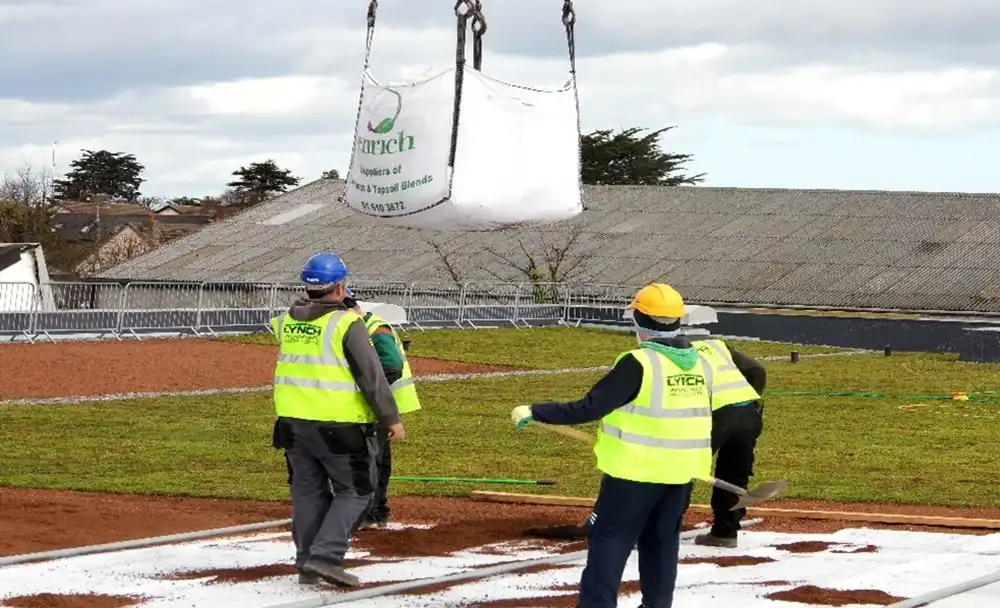Cities are dynamic, energetic spaces, but they can also be harsh environments for nature. Hard surfaces, traffic, and limited green space create challenges for both people and ecosystems. That is where green roofs come in. These innovative systems bring nature back into urban areas, softening the built environment and making our cities more resilient to the impacts of climate change.
What Is a Green Roof?
A green roof is more than just a layer of plants on top of a building. It is a carefully engineered system that includes:
- A waterproofing membrane and root barriers
- Drainage layers and growing media
- Carefully selected vegetation
Together, these components create a functioning ecosystem where nature might otherwise be absent, a practical, nature-based solution for the built environment.
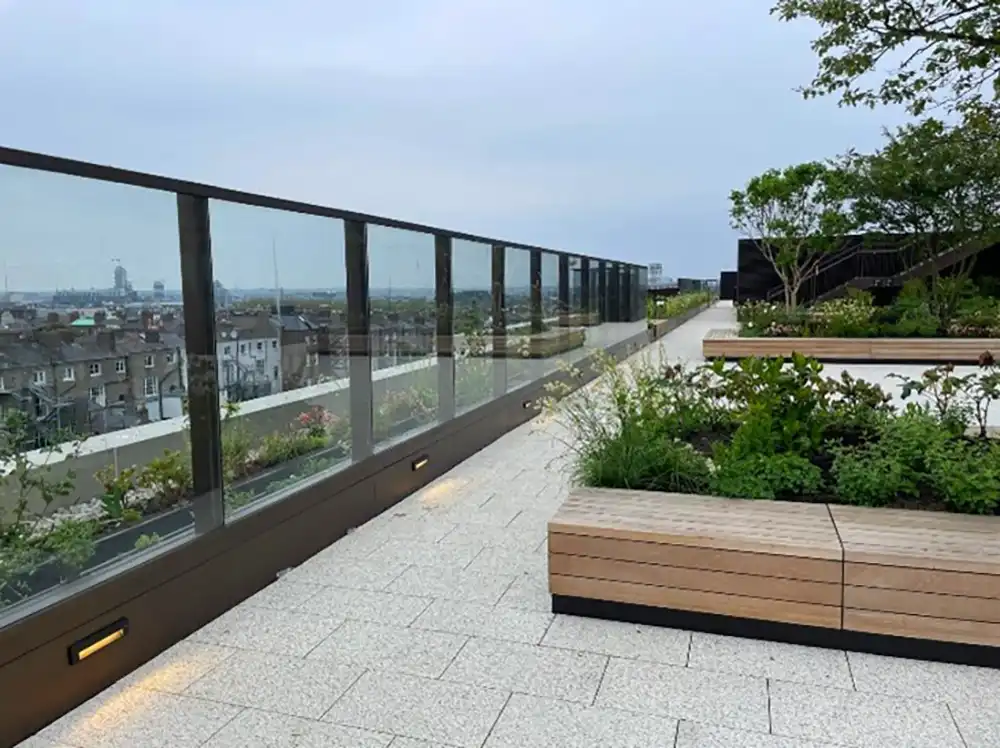
Why They Matter: Environmental Benefits
The benefits of green roofs are well documented:
- Stormwater control: They can retain 50–80% of annual rainfall, reducing flash flooding and easing pressure on stormwater infrastructure.
- Energy efficiency: By providing thermal insulation, they lower the demand for artificial heating and cooling, cutting both energy use and carbon emissions.
- Air quality and biodiversity: They filter particulates, absorb CO₂, release oxygen, and create habitats for pollinators, birds, and beneficial insects, even in city centres and dense housing estates.
Enrich’s Role: The Right Growing Media
At Enrich Environmental, we focus on what makes these systems perform: the substrate. Natural soils are rarely suitable for rooftops because they are too heavy and hold too much water. That’s where our expertise in engineered soils comes in. By blending our high-quality compost with sand, lightweight expanded clay aggregates (LECA), and other materials, we create tailored green roof substrates designed for different applications.
We supply tailored mixes to suit different green roof applications:
- Type 7 Extensive Green Roof Substrate: Ideal for sedum mats; lightweight, low-maintenance, and excellent at drainage. It is a low-maintenance option ideal for sedum mats. It provides excellent drainage while supporting shallow-rooted vegetation that can thrive with minimal upkeep.
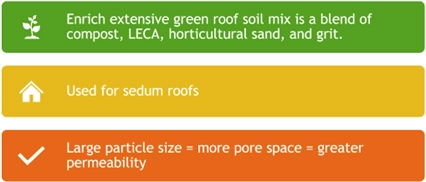
- Type 8 Intensive Green Roof Substrate: Supports shrubs, small trees, and rooftop gardens where deeper soils and more diversity are required. It supports deeper soil profiles and a greater diversity of plants, from shrubs to small trees, making it suitable for rooftop gardens and recreational spaces.
- Type 9 Wildflower Green Roof Substrate: Creates habitats for pollinators and native flora, boosting biodiversity in areas with limited green space.
All mixes meet FLL and BS 8616 standards, ensuring long-term performance.
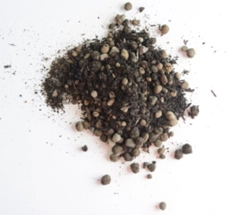
Design Matters: Avoiding Common Pitfalls
The success of a green roof depends on correct design and installation. Choosing the wrong substrate can lead to drainage issues, plant failure, and higher maintenance costs.
Some common troubleshooting examples include:
- Soil compaction during installation; Loosen substrate and aerate before planting sedum mats.
- Soil compaction over time; Use a stable, low-organic mix with LECA to maintain structure.
- Weed growth; Choose low-fertility substrates and install sedum or wildflower mats to suppress unwanted plants.
Designers, architects, and contractors increasingly recognise the importance of selecting the right substrate. The wrong choice can lead to problems such as poor drainage, plant failure, and increased maintenance costs.
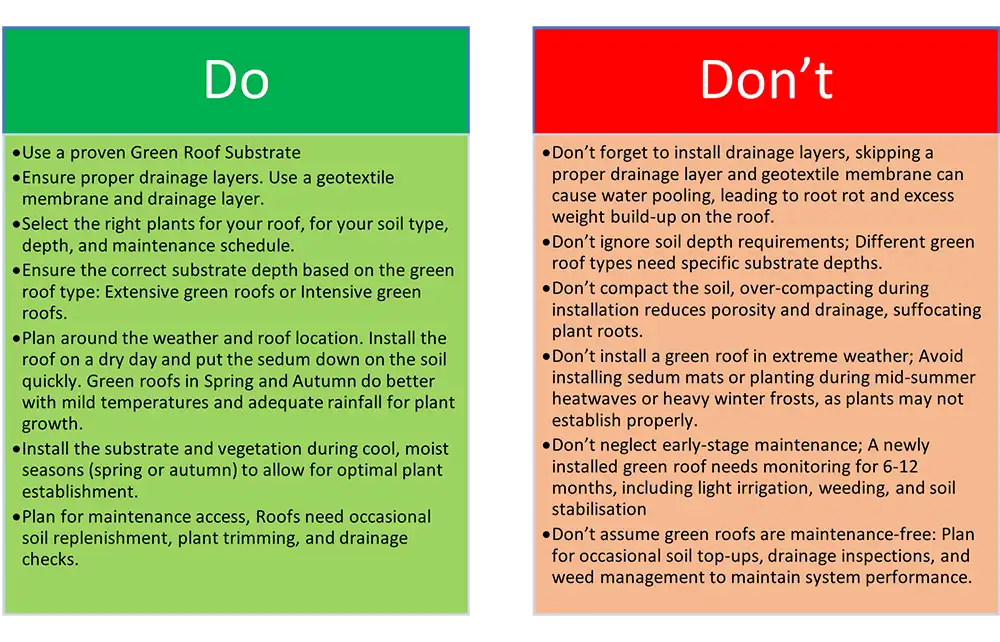
The benefits of green roofs extend well beyond environmental resilience. They enhance biodiversity, reduce urban heat island effects, and create more pleasant and liveable spaces for people. A network of extensive green roofs across a city can function as ecological steppingstones, linking fragmented habitats. In doing so, these systems demonstrate the practical application of circular economy principles, where organic waste becomes compost, compost becomes substrate, and substrate sustains green infrastructure.
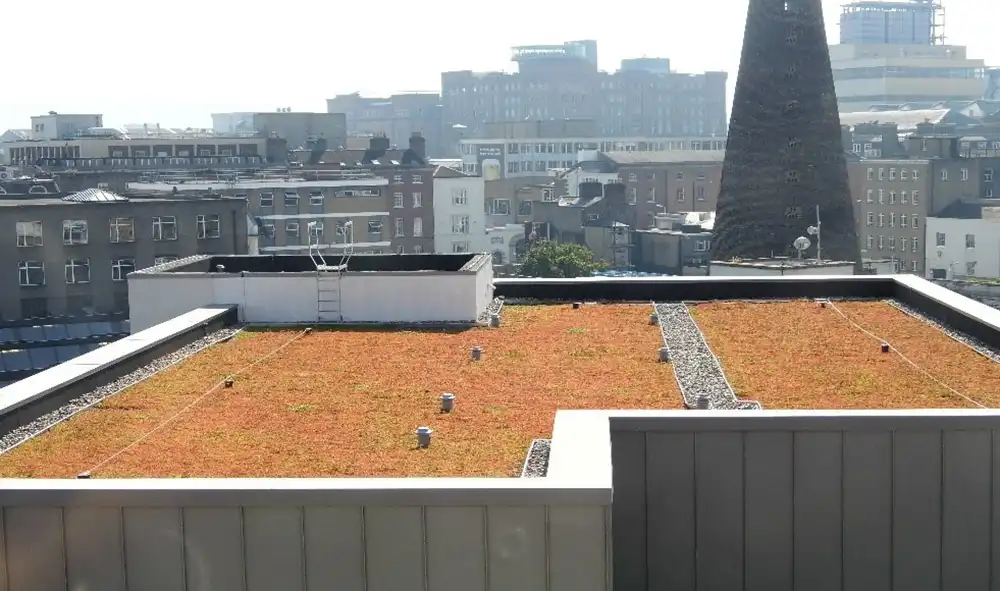
At Enrich Environmental, we see these projects as an opportunity to combine science, sustainability, and design. By supplying high-quality engineered soils and compost-based substrates, we aim to have green roofs not only survive but thrive. We work with dedicated green roof installers whose focus is on performance and delivering projects that are both climate-smart and visually impactful.
As Ireland’s towns and cities expand, the role of nature-based solutions in tackling urban challenges will continue to grow. Green roofs are not simply architectural features, they are working systems that reduce flooding, save energy, clean the air, and restore habitats. With the right materials and expertise, they can transform urban environments into greener, healthier, and more resilient places to live. At Enrich, we are proud to provide the foundation, for these transformations, turning recycled organic matter into the soils and substrates that make climate-resilient cities possible.
